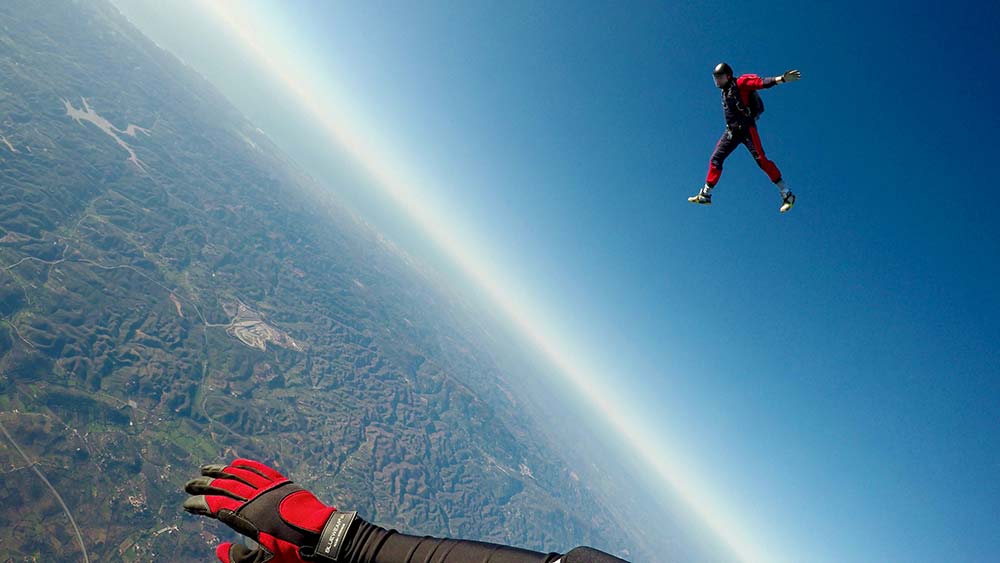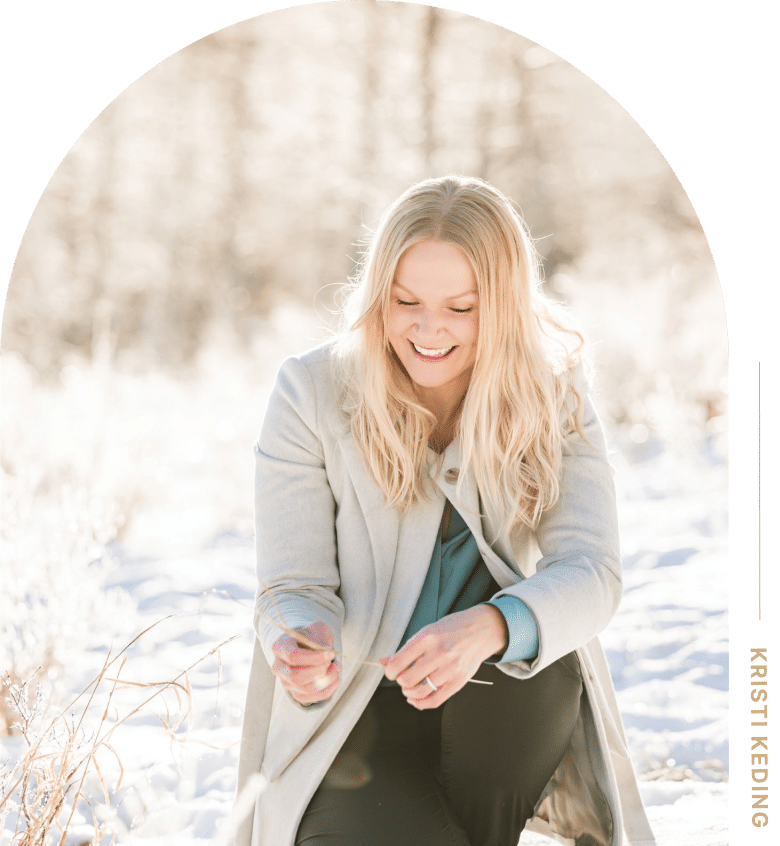The Personal Pattern
There was a time I thought I had only two settings: go hard or completely shut down.
I could either be laser-focused, productive, on fire with ideas and action, or I was barely functioning, foggy, withdrawn, and full of shame.
There never seemed to be a middle.
I wasn’t just completing tasks, I was going all in. If I started reading a book, I had to read every single page, even when it was a drag. If I vacuumed, I couldn’t just tidy up. I’d have to move every piece of furniture and get into every corner. I’d swing into a strict eating style, convinced this was the way to heal my body. Then I’d layer on a morning routine that was full of all the “right” habits: journaling, meditating, breathwork, movement. All of it, every day. No room for deviation.
But then, when I couldn’t keep it up, or when life inevitably interrupted, or I became exhausted, I’d crash hard. I’d collapse, and my nervous system would say, “Nope, we just aren’t doing that today.”
Suddenly, it was a free-for-all. I’d find myself eating whatever was easy or comforting, even when I knew it left me feeling worse. I wouldn’t move my body at all, even though I knew it sustained me. I’d put off every work item, avoid even the smallest chore, because somewhere deep down there is this voice: If I can’t do it all at once or do it right, I’m just not going to do it at all.
Just the other day, I caught myself spiraling. I have been working through some internal issues and my therapist pointed out to me my all or nothing thinking. I clung hard to this concept and felt like this was my answer to my current struggles. I mapped out the last few years and told my husband, “I think this is it. If I could just fix my all-or-nothing thinking, then the problem would go away.”
After a couple of hours of hearing me loop through the same thought, he looked at me and said, gently:
“Don’t you think what you’re doing right now—pinning all of these issues on all-or-nothing thinking—is all-or-nothing thinking?”
At first, I was hurt. How dare he say that?
But then it settled. And I laughed.
He was right.
I was doing the exact thing I was trying not to do. The pattern is so sneaky, so ingrained, that I didn’t even recognize it while talking about it.
How funny. How human.
And how freeing, in a strange way.
Because if even the awareness can get tangled in the pattern… maybe the path out isn’t perfect consistency.
Maybe it’s simply noticing.
And returning. Again and again.
The Hidden Logic Behind the Extremes
All-or-nothing thinking doesn’t just appear out of nowhere. It often takes root in high-achievers and sensitive professionals who’ve spent their lives performing excellence and fending off criticism.
When the stakes feel high, in career, relationships, or even personal healing, we tend to default to what feels safest:
- Do it perfectly or don’t do it at all.
- Go all in or opt out entirely.
- Show up with energy and certainty or don’t show up at all.
In this binary, moderation feels like weakness. Like settling. Like not caring enough.
But here’s the thing:
These extremes aren’t actually about ambition. They’re about survival.
For many of us, overdoing has been a shield. A way to earn worth. A strategy to avoid the vulnerability of “just enough.”
And when we crash, because we always do, the freeze response kicks in. We go numb. We disconnect. We tell ourselves we’re lazy or inconsistent when really, we’re exhausted.
Reflection: When you crash, what does your inner voice say to you?
Can you see that voice as trying to protect you, even if it’s misguided?

Why the Middle Often Feels So Uncomfortable
The middle: that gentle, sustainable pace we dream of can feel terrifying.
- Because it’s unfamiliar.
- Because it doesn’t come with instant feedback or external validation.
- Because it asks us to trust ourselves without the highs of hustle or the lows of collapse.
The middle asks us to slow down, listen in, and tolerate the discomfort of not doing it all and potentially not having control. Because in the all-or-nothing thinking there is a delusion of control and safety.
And that kind of trust? It takes practice. It takes unlearning. It takes gentleness.
But here’s what I’ve come to believe:
The middle isn’t mediocrity. It’s mastery.
It’s where integrity lives. Where clarity emerges. Where nervous systems recalibrate.
It’s not flashy. But it’s deeply freeing.
Reflection: What does the “middle” stir up in you?
Does it feel boring? Unsafe? Too quiet?
What stories have you been told about doing “just enough”?
But here’s something else to hold:
For some people, this all-or-nothing pattern might be woven into their temperament. Some of us are naturally more intense, more focused, more driven. That’s not wrong.
But over time, the boom-and-bust cycles of extreme effort followed by collapse become exhausting. They wear on your body, your relationships, your spirit. And eventually, even the highs lose their thrill.
This is where following your energy, understanding your rhythms, and recognizing the parts of you that don’t live in black and white becomes crucial. Because not all of you is all-or-nothing. (And, hello isn’t that statement itself a little all-or-nothing?)
We all have parts of ourselves that are more flexible, more responsive, more gray.
Maybe you let your weekends be unstructured.
Maybe you have friendships where you show up imperfectly and feel loved.
Maybe there’s a hobby or practice you return to with softness, not pressure.
Those are the spaces where gray, the middle, already lives.
And the more you notice them, the more you can build from them.
Where in your life do you already allow for flexibility?
What does it feel like to remember that you’re not all one way?
We are layered, multifaceted, and full of contradiction. Giving ourselves the grace to hold that complexity is another step toward freedom.
Learning to Live in the Middle
This shift won’t happen overnight.
But it can begin to unfold this way:
- Saying no to one extra task, even when you are worried it may make you look unhelpful
- Letting yourself rest before you hit the wall
- Catching the voice that says, “If you’re not giving 100%, why bother?” and gently questioning it
It can look like choosing small, consistent action over dramatic bursts of energy.
It can look like celebrating slow progress, and trusting it will build.
And on the days you slip back into extremes (because, of course, we will), work on:
Noticing it. Naming it. And beginning again.
Because that’s the real win:
Not perfection.
Not consistency for consistency’s sake.
But the ability to return to yourself. Again and again.
A Soft Prompt for Reflection
If you resonate with the all-or-nothing pattern, I invite you to ask yourself:
What does my middle look like?
Not someone else’s version. Yours.
What pace feels gentle and true?
What choices help you stay connected, without burning out?
And can you let that be enough?
Not forever.
Just for today.
Why Help Can Be a Lifeline
If these words feel familiar—not just in your mind, but in your body—know this:
You don’t have to figure this out alone.
The pull between “all” and “nothing” is often too strong to untangle in isolation.
It’s not because you’re weak. It’s because these patterns are wired in, often for very good reasons.
Sometimes, having someone mirror back the middle, offer it, model it, hold it, is what allows your nervous system to finally exhale.
This work helps you shift from rigidity into resilience. From stuckness into momentum. From burnout into grounded energy.
It helps you:
- Feel more emotionally steady, instead of constantly swinging between extremes
- Develop sustainable rhythms that feel nourishing, not punishing
- Connect to your body and intuition, rather than running on auto-pilot
- Create space in your life that doesn’t feel empty, but deeply yours
If you’re ready to find your middle, I’d love to walk beside you.
Let this be your permission slip: You don’t have to live in the extremes. The middle is not a compromise. It’s where your real power lives.










